Class40 podium complete in Transat Jacques Vabre
Published on November 23rd, 2017
Maxime Sorel and Antoine Carpentier on V and B, have won the Class40 of the 13th edition of the Transat Jacques Vabre, after crossing the finish line in the Bay of All Saints in Salvador de Bahia on Wednesday, November 22, 2017 at 23:19:15 (UTC), 17 days 10 hours 44 minutes and 15 seconds after leaving Le Havre, Normandy France.
V and B covered the theoretical course of 4,350 nautical miles at an average speed of 10.40 knots but actually sailed 4,513 nautical miles at an average speed of 10.77 knots.
V and B beat the previous record of 22 days 13 hours 2 minutes 22 seconds set by the Italian duo Giovanni Soldini and Pietro D’Ali on Telecom Italia in 2007 (the first time Class40 had been included in the Transat Jacques Vabre and the last time the race went to Salvador) by 05 days 02 hours 18 minutes and 07 seconds.
In one of the closest finishes in Transat Jacques History, Aïna Enfance and Avenir (Aymeric Chappellier / Arthur Le Vaillant) finished second, just 17 minutes and 42 seconds behind. Sorel, who finished second with Sam Manuard, the designer of his (and the second-placed) 40ft monohull in the last edition of this bi-annual double-handed Route du Café, in 2015, only finally moved into the lead in the later afternoon on Wednesday.
In third was Phil Sharp (Britain) and Pablo Santurde (Spain) on Imerys Clean, who led the race for 12 days but in a boat that is a generation older than the two ahead and was technologically outrun in the final straight in beam reaching conditionas along the coast of Brazil.
Imerys Clean Energy crossed the finish line on Thursday, November 23, 2017 at 04:33:41 (UTC) 17 days, 15 hours 58 minutes and 41 seconds after leaving Le Havre, Normandy, France.
Imerys Clean Energy covered the theoretical course of 4,350 nautical miles at an average speed of 10.27 knots but actually sailed 4,539 nautical miles at an average speed of 10.70 knots. It finished 05 hours, 14 minutes and 26 seconds behind the winner, V and B (Maxime Sorel and Antoine Carpentier), which had been chased all the way to the line by Aïna Enfance et Avenir (Aymeric Chappellier and Arthur Le Vaillant).
“It’s a great relief to arrive in Salvador de Bahia and have a caipirinha and some fruit,” Sharp said after stepping onto the pontoons in Salvador de Bahia. “This transat was really extreme with V and B and Aïna Enfance et Avenir. It was a great battle with my competitors but also with the many different types of weather and against our limit of physical and mental fatigue. There was no moment where you could relax.
“This isn’t the result we dreamed about, but we’re happy to have done the best we could have with our boat. We pushed it to 100% and our strategy was good. The end of the race was tough, but it’s really a matter of boat design and it wasn’t possible to keep up with the more recent designs.
“We led the whole first week, we lost in the Doldrums by entering to the west but we got out a little earlier. We wanted an advantage when we got out but it wasn’t enough. We did a good job and pushed the boat to the limits. And for that, we have to celebrate this finish.”
Sharp and Santurde led across the start line in Le Havre and after passing the brutal cold front off the Bay of Biscay they led the race for nearly 13 days (bar a few hours in the Doldrums) from November 7 until the morning of November 20 when Aïna Enfance et Avenir sailed passed them. Five hours later, V and B pushed them into this third.
It was a case of technology and not strategy at that point. Imerys Clean Energy were ahead by 20 miles coming out of the Doldrums on Saturday, November 18, as their westerly positioning paid out. But it was not enough.
The three boats on the podium are all Manuard design, but the two French 40ft monohulls are the version 3 of the Mach 40 design and Sharp’s version 2 is simply slower in the reaching wind angles they have had since the Doldrums. Aïna Enfance et Avenir was launched this year and Sam Manuard the designer had further optimised V and B, after sailing it to second with the winning skipper here, Maxime Sorel, in 2015.
Imerys Clean Energy was originally the boat that won the 2013 Transat Jacques Vabre and Sharp has restored it after it fell into serious disrepair, but the technology has moved on. It may only be a half a knot difference, but over 24 hours that is heartbreaking – or like being in a slowly closing vice.
The 36-year-old, Sharp, an Imperial College mechanical engineering graduate from Jersey, is no stranger to battling powerful French fleets. He made his mark by winning the Class40 of the prestigious single-handed Route du Rhum in 2006 at his first attempt.
In 2013, Santurde, the 30-year-old Spanish sailor, finished second in the Class40, in a duo with Alex Pella (a winner in the Multi50 trimaran class in this edition).
“It’s different from my previous Transat Jacques Vabre,” Santurde said, “because we stopped very early for damage and we had to catch up for whole of the race. Here, we led the whole first week with Phil who was always pushing the boat to 110%. Finally we lost the race at the end, but I’m very happy to be here.”
Imerys Clean Energy’s time also puts them almost five days inside the old record that fell last night of 22 days 13 hours 2 minutes 22 seconds set by the Italian duo Giovanni Soldini and Pietro D’Ali on Telecom Italia in 2007 (the first time Class40 had been included in the Transat Jacques Vabre and the last time the race went to Salvador).
Race details – Entry list – Tracker – Facebook
13th edition of the Transat Jacques Vabre
• Biennial doublehanded race now 24 years old
• Two founding partners: the city of Le Havre and brand Jacques Vabre
• Four classes on the starting line: Class40, IMOCA, Multi50, and Ultimate
• Starting November 5 in Le Havre (FRA) for the 4350nm course to Salvador de Bahia (BRA)
n 2013, and again in 2015, all the boats flew past Salvador de Bahia, sails filled by the trade winds of the south-east, under the tropical sun…One imagines that they dreamt of finally finishing their race in All Saints’ Bay. In 2017, it will be a reality!
After the start line and a coastal route as far as Etretat, the duos will head towards Brittany to get out of the Channel as quickly as possible, where the currents are powerful, cargo traffic dangerous, and a lot of attention is needed.
They will then enter the Bay of Biscay, where, depending on the position of the Azores anticyclone, they will either find downwind conditions, easy and fast, like for the last Vendée Globe, or tougher and slower conditions in the passage of some late autumn depressions.
Four hundred miles later, having passed Cape Finisterre, the northern Portuguese trade winds should propel them quickly towards Madeira, and then the Canary Islands, where awaiting them will be northeast trade winds, which could be strong or weak.
Passing close to the Portuguese coast, or offshore, to the east or west of the Canary Islands and then the Cape Verde islands – you have to choose the right options. The next goal is to establish your position for the crossing of the dreaded Doldrums, located a few degrees north of the equator. At this time of year, it can change position very quickly, extend or contract, because even after carefully studying of the satellite images, sudden squalls can develop and stall the competitors under a good shower without wind for hours.
This passage is crucial in the Transat Jacques Vabre racecourse. Further west… Further east… After the calms, rainy squalls, with too much or no wind… The final goal is to get out well-positioned enough to benefit first from the southeast trade winds and to cover the remaining 850 miles towards the finish,passing along the islands of Fernando de Noronha, along the coast of Brazil and finally heading northwest into the magnificent All Saints’ Bay.
This transoceanic racecourse from North to South is more demanding than a transat from East to West; it requires the skippers to have sharp tactical and strategic qualities, good weather training, to be in excellent physical condition to maintain a sustained speed in the trade winds… And to have a lot of patience to cross the equator.
Source: Transat Jacques Vabre


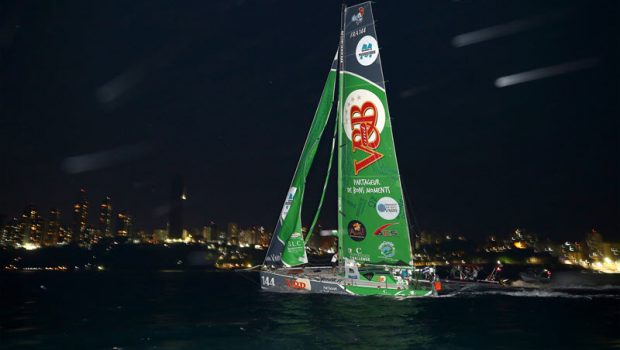

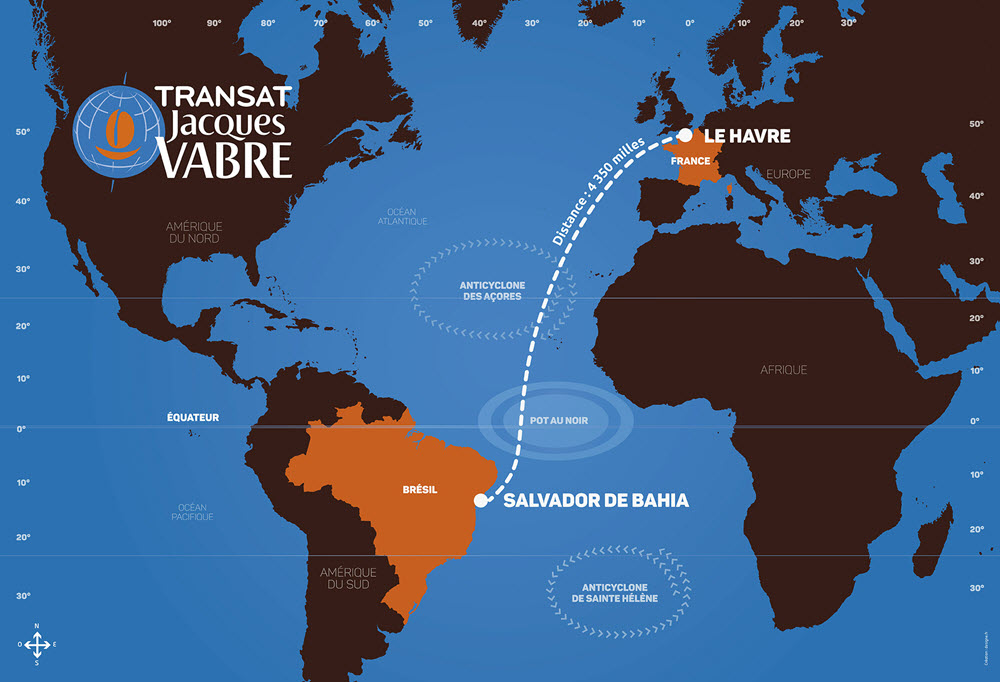

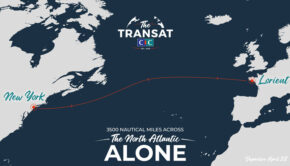
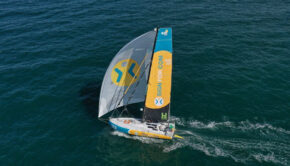
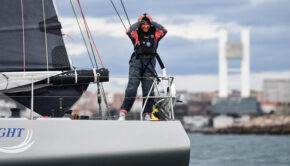
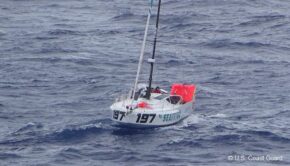
 We’ll keep your information safe.
We’ll keep your information safe.